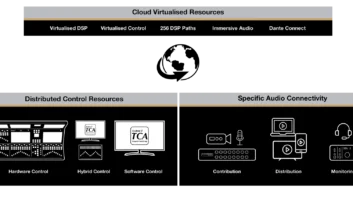In the ever-evolving landscape of technology, certain misconceptions can sometimes hinder the full potential of innovative solutions. One such misconception revolves around the term “virtualisation,” often narrowly associated with cloud computing and CPU/GPU-based processing.
However, the truth is that hardware virtualisation, as a concept, goes beyond these realms and describes an abstraction of underlying hardware that spans a multitude of computing technologies, be it CPUs, Field-Programmable Gate Arrays (FPGAs), or GPUs. This article delves into the multifaceted world of virtualisation, dispelling myths and exploring the intersections of technology, efficiency, and environmental responsibility.
Misconception 1: Cloud-centric virtualisation
When many hear the term “virtualisation,” their minds often jump to the cloud—a virtual realm where computational tasks are performed using remote servers. While cloud computing is undoubtedly a significant application of virtualisation, it’s essential to recognise that it isn’t confined to the cloud. At its core, hardware virtualisation involves abstracting the hardware itself, hiding the physical characteristics of the computing platform and allowing for an application to seamlessly operate across a number of host machines with the help of a hypervisor. This concept holds true across different hardware technologies, whether it’s CPUs, FPGAs, or GPUs.
Broadening the horizons of virtualisation
Imagine a scenario where the same level of hardware abstraction that powers cloud computing is applied to other hardware technologies. This opens doors to enhanced flexibility and scalability across industries. For instance, in the context of broadcast technology, such as that developed by manifold technologies, virtualisation can lead to efficient resource allocation, flexible and automated workflows, and streamlined operations. It’s crucial to break free from the misconception that virtualisation is solely about the cloud; it’s about leveraging the power of abstraction across the technological spectrum.
Misconception 2: The ‘green cloud’
The allure of the cloud’s environmental benefits is hard to ignore. The idea that workloads can be spun up or down on demand, minimising energy consumption, seems like a step towards a greener future. However, there’s a caveat that often goes unnoticed. Most cloud services rely heavily on CPU-based processing, which consumes significantly more power compared to other technologies, such as FPGAs. The assumption that shifting to the cloud inherently reduces carbon footprint neglects the energy-intensive nature of CPU-driven workflows.
Energy efficiency and processing dynamics
Herein lies the conundrum: environmental consciousness and computational efficiency are not always aligned. While the cloud’s on-demand nature is beneficial, it’s equally vital to consider the energy demands of the technologies underpinning these services. Enter FPGAs—an alternative that combines the benefits of on-demand functionality while being up to 20x more power efficient than CPU-based processing. Broadcasters and technology providers, like manifold technologies, can harness FPGA-based virtualisation to achieve the best of both worlds: reduced power consumption without compromising the performance for broadcast live production workflows.
The quest for ideal solutions
Efficiency and effectiveness are the cornerstones of technological progress. The pursuit of an ideal solution involves finding the sweet spot between on-demand functionality and processing efficiency. As FPGAs demonstrate their prowess in energy-efficient processing, the industry can recalibrate its focus. The synergy between virtualisation and FPGA technology can redefine how broadcasting, business development, and environmental responsibility intersect. This marriage of abstraction and efficiency paves the way for unprecedented innovation in live production broadcast technology.
Shaping the future: From misconceptions to reality
In conclusion, hardware virtualisation is a concept that transcends the confines of cloud computing and CPU/GPU processing. It is the art of abstracting all types of hardware to achieve greater efficiency and flexibility. As we navigate the intricacies of technology and environmental responsibility, it’s imperative to critically assess the underlying assumptions. Shifting towards greener practices demands a holistic understanding of the energy dynamics inherent in various hardware technologies. By embracing FPGA-based virtualisation, industries like live production broadcasting can embrace a future that marries on-demand capabilities with energy efficiency, ultimately driving progress and redefining possibilities.






